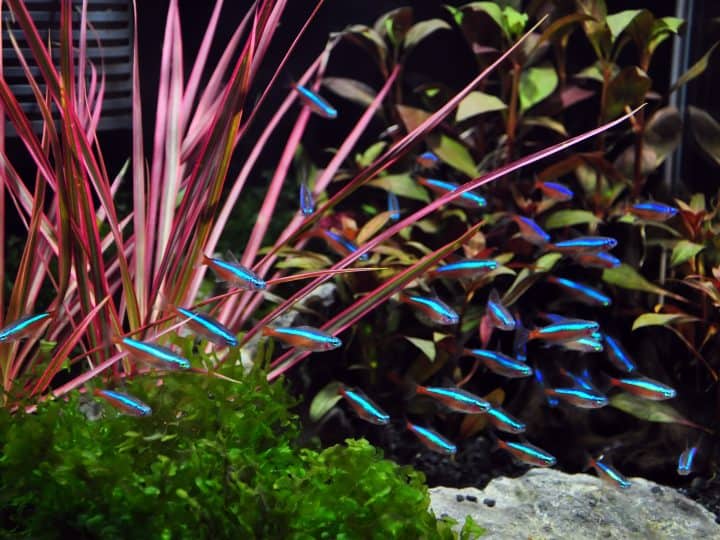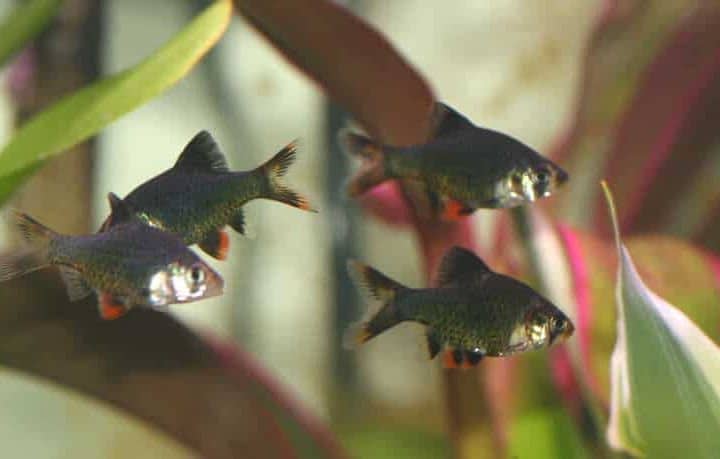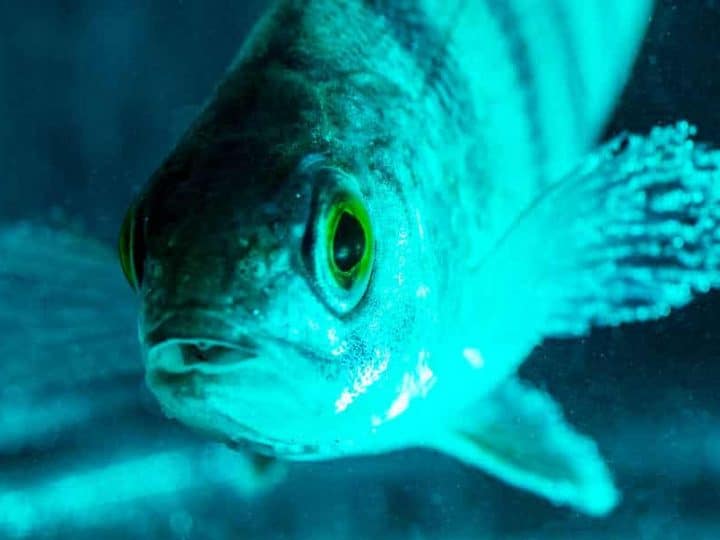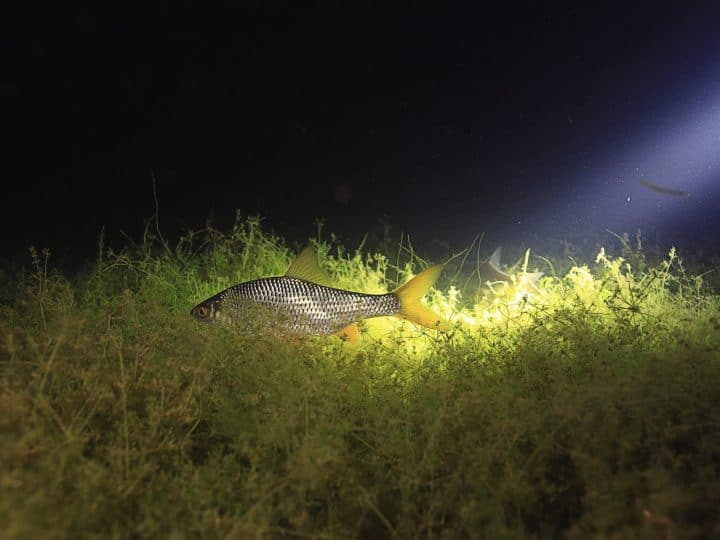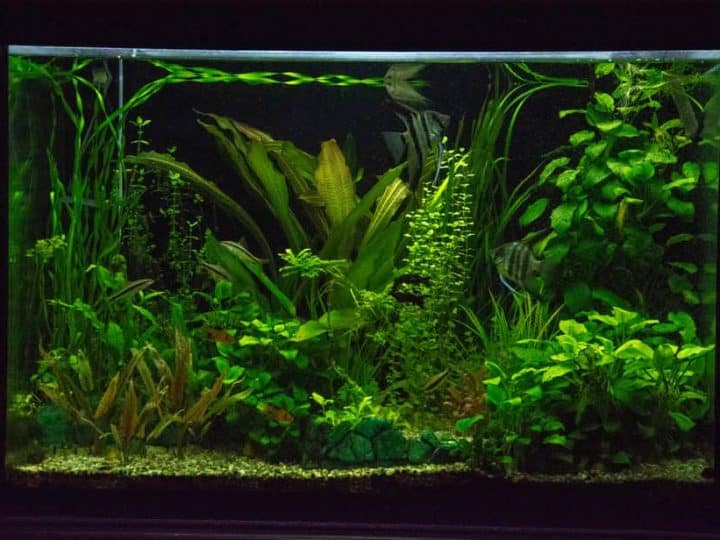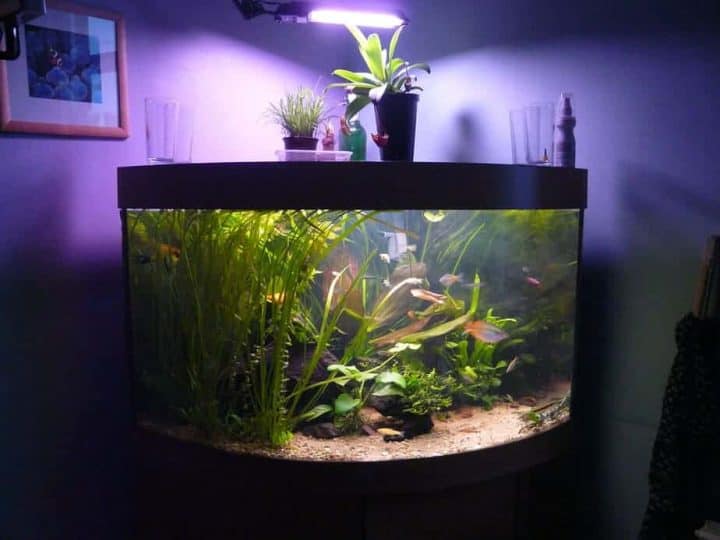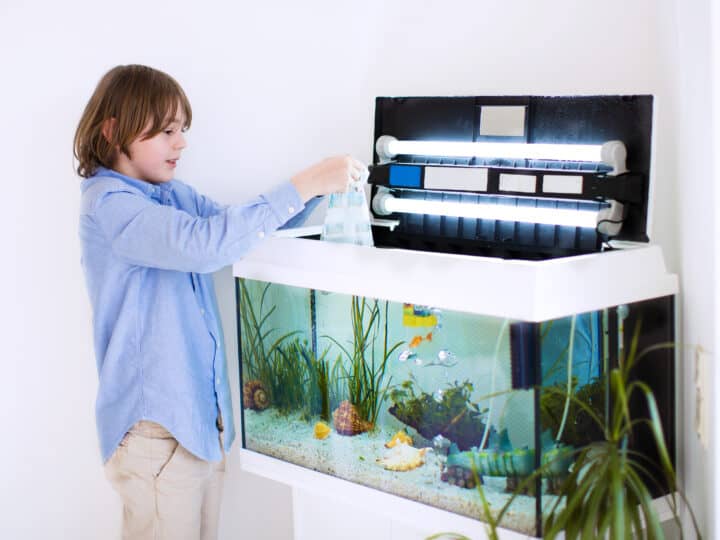Finding dead fish in my aquarium: it has happened to me before and will happen to me again in the future. What should you do if a situation like this presents itself? I distinctly remember calling my local fish store, slightly panicked, for answers.
Quick Answer
If an aquarium fish dies, the priority is to remove it from the tank for further inspection. If the fish had a disease, quickly remove it to prevent the spread to other fish or crustaceans. Inspect your aquarium by observing the other fish and measuring your water parameters to find the cause.
Chances are your fish died of old age, but it’s critically important if the reason of your fish’s passing is something else. You should know how to act and what steps to take, so that’s exactly what I will tell you on this page. After reading, you’ll make sure how to keep the rest of your fish safe.
The first thing to do after a fish died: remove the body
Doing a regular headcount and health check when feeding your fish will tell you whenever someone is missing. If a tank inhabitant is missing, you’ll have to start looking. Fish are notorious for finding phenomenal hiding spots, but your search will also result in finding a dead fish on occation.
It is important to remove any dead fish as soon as you find it to prevent polluting the aquarium water or spreading potential diseases. Corpses will start to rot quickly in the warm water, causing sudden increases of dissolved ammonia.
The decaying process isn’t the only problem that you might face. If a fish has died from a disease, you do not want any other fish eating the body. I know it sounds cruel, but this is something almost all fish/snails/shrimp do. There are people who leave deceased fish in their tank on purpose because they rely on their giant shrimp colony to clean it up, but this is not something I would recommend.
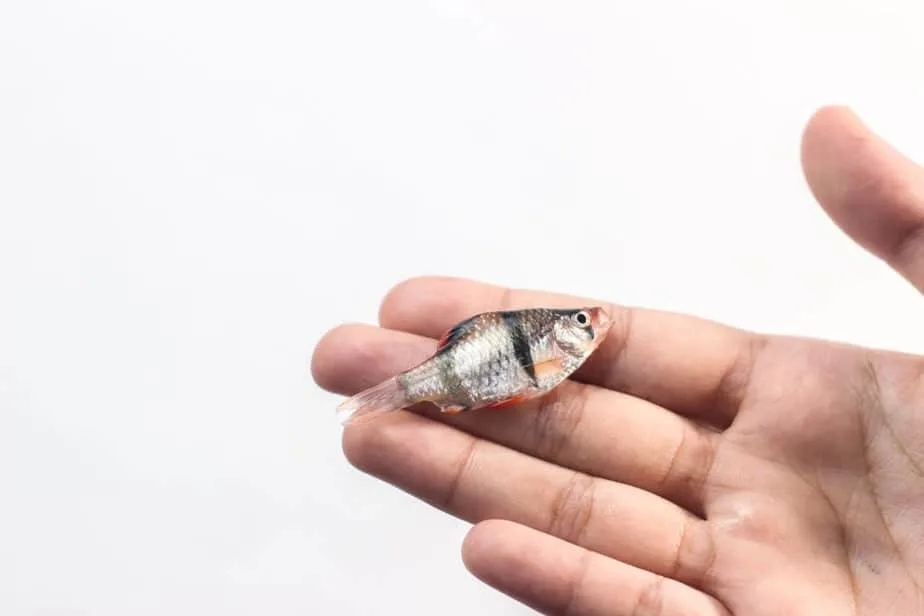
What to do with the body of a dead fish
You’ve got several options. The first thing that comes to mind to many people is flushing it, but this is not the correct way for several reasons. The main reason to not flush it is the risk of spreading foreign diseases or viruses to your local ecosystems. We don’t always think of it, but a lot of the fish we keep are tropical fish.
The second option is throwing in the trash, which is the one I recommend. This option is a little bit climate-depended as warm weather can elicit a lot of nasty smells. The use of plastic bags can counter this, but if you don’t have to throw the trash out any time soon you are better off temporarily storing the dead fish (in 1 or multiple bags) in the freezer. This way there is no smell and you can throw it away later.
Lastly there are some “creative” options like burning or burying it. Both these options are fine and up to you. With larger fish, or fish with which you felt a strong emotional connection, burying might be your best option.
Second: Inspect your aquarium to find the cause
With an average of 3 to 5 years, small tropical fish do not live very long. If you’ve got many fish that you did not all buy at the same time, you’ll regularly find one that has passed away. Larger fish like goldfish or cichlids live longer lives.
What I’m trying to say: if you find one dead fish, you probably don’t have to worry. However if you find multiple fish passing within a short period of time, you need to take this step very serious.
The first thing that you should do is look at the health and behavior of your other fish. Are they lively and active or is something off? Look for common diseases like Ich (commonly called white-spot disease) or fin rot; we’ll get into common causes of dead shortly.
If you notice odd behavior, find out what’s causing it so you can act in a timely manner. You should also look closely and check whether there are more dead fish, shrimp or snails in the tank that need to be removed.
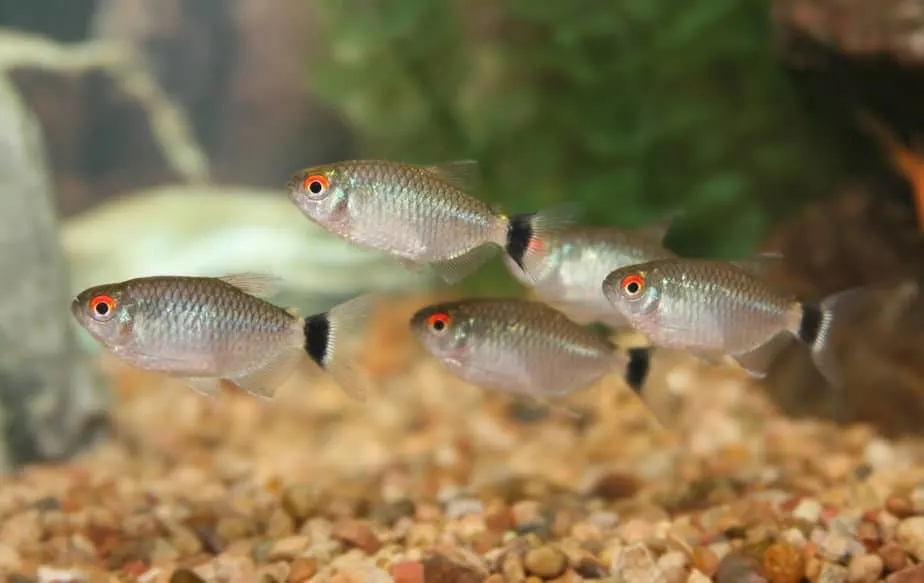
Measure your water parameters (especially ammonia and nitrite)
Next thing to do is test your aquarium water, as poor water parameters is a common cause for dead fish. You especially need to test for dissolved ammonia (should be 0 parts per million or PPM) and nitrite (should also be 0 PPM). If you can find a measurable amount of either one of these two dissolved substances, you need to take action.
To accurately measure water parameters you need a liquid based test kit like this one on Amazon. It’ll have all you need and last you a decent time.
What exactly you should do is something we cover in a second, first I want to briefly explain probable causes for ammonia/nitrite spikes. Ammonia is caused by fish poop but in a healthy aquarium is tackled by beneficial bacteria. A sudden spike of ammonia can be too much for the bacteria to handle. A short and high spike like this can be cause by rotting organic matter like plants or a diseased aquatic critter that you missed.
Nitrite is a substance that also is part of the “nitrogen cycle”, just like ammonia. It’s a little less toxic but still lethal to fish in low concentrations.
To fix dissolved ammonia/nitrite, perform a water change. In these stressful scenario’s you’re allowed to replace as much as 50% of the aquarium water with new “clean” water. This temporarily lowers the ammonia and nitrite level to make the tank more habitable to your fish.
Check if your fish died from one of these common causes
It can be hard to identify why a fish died. I’ve had fish die in the past where I could not pinpoint the cause. This can be a heartbreaking and stressful situation to be in, especially if more fish keep dying. You’ll feel powerless and desperate. Let’s check whether it’s one of the following causes.
1. Ammonia Spike
I’ve just had you measure your water parameters. If you measure ammonia, your fish likely die because of the ammonia. Dissolved ammonia causes stress and will eventually be fatal to your fish. If this is the case, perform a water change.
2. New Tank Syndrome
If your tank is still very new (less than 2 months), chances are that your tank is not properly cycled yet. This means that your tank (and the filter in your tank) did not grow a strong and healthy colony of beneficial bacteria that break down ammonia into nitrite and finally into nitrate. If this is the case, do a water change and buy a product like this one (link to Amazon) to temporarily and instantly raise your tank’s ability to battle ammonia produced by your fish.
3. Ich or White-Spot Disease
You’ll quickly recognize this disease by the white spots on your fish. If this disease is in the starting phase, only the diseased fish will show white spots. Do not be fooled, your entire tank is contaminated and needs to be cured. Due to the nature of this disease, it’s not the fish who need to be cured; it’s the entire tank. Use a known and reliable cure like this one on Amazon. I’ve written a page on my site that goes into more detail, that you can check out here.
4. Old Tank Syndrome
If you’ve just added the fish that has passed away to your established aquarium, you might be dealing with old tank syndrome (OTS). In this case, your dissolved nitrate levels have gradually increased to a point that new fish who are not used to these levels can not handle it. They will die within 48 hours of being added to the tank. If this is the case, perform a 5 – 10% water change every other day to gradually get your parameters back to normal. For more info, check out this article on my site that goes into further detail.
5. Stress by Bullying
Check the body of the diseased fish and look for severe damage to fins and body. If there are signs like ripped fish or open wounds, it could be that your fish has been bullied by other fish. Reasons can vary, but this is extremely stressful and can eventually kill them. When dealing with this problem, keep a close eye on the behavior of other fish in your tank. If there’s or specific “bully” try to rehouse this fish.
6. Lack of Maintenance or Overfeeding
The last cause that’s very common and easy to recognize is either a lack of maintenance or overfeeding. Think back and try to see whether you’ve maybe neglected doing maintenance for too long. If this is the case, there’s likely an ammonia spike due to rotting organic material. This problem is very similar to overfeeding as all uneaten food will also start to rot, causing a sudden rise in ammonia.

